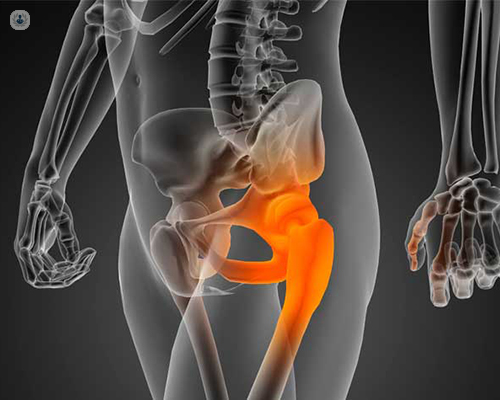Periacetabular osteotomy (PAO)
Mr Alastair Dick - Orthopaedic surgery
Created on: 04-17-2024
Updated on: 05-14-2024
Edited by: Conor Lynch
What is a periacetabular osteotomy (PAO)?
Periacetabular osteotomy (PAO) is a surgical procedure used to treat certain hip conditions, particularly hip dysplasia in young adults and acetabular retroversion. It involves repositioning the acetabulum, the socket part of the hip joint, to improve its coverage of the femoral head (the ball part of the hip joint). By reorienting the acetabulum, PAO aims to restore normal hip anatomy, alleviate pain, and prevent or delay the progression of hip osteoarthritis.

What conditions can a PAO help treat?
Hip dysplasia is a condition where the hip socket is shallow or improperly formed, leading to instability and abnormal loading of the hip joint. If left untreated, hip dysplasia can result in pain, limping, hip arthritis, and impaired mobility. PAO is considered an effective treatment option for patients with symptomatic hip dysplasia who have not responded to conservative measures such as physical therapy, activity modification, and pain management.
How is a PAO performed?
During a periacetabular osteotomy, the surgeon makes an incision in the hip area and carefully detaches the acetabulum from the pelvis. The acetabulum is then repositioned using specialised instruments and fixed in its new position with screws. By correcting the alignment of the acetabulum, PAO aims to improve the congruency and stability of the hip joint, reducing pain and preventing further damage to the cartilage and joint surfaces.
What does recovery from periacetabular osteotomy involve?
Recovery from periacetabular osteotomy typically involves a period of restricted weight-bearing and physical therapy to regain strength, mobility, and function. Patients may experience temporary limitations in hip motion and discomfort during the initial recovery period, but most can return to normal activities within a few months after surgery.
What can patients expect from the results after undergoing a periacetabular osteotomy?
PAO is associated with excellent long-term outcomes and a high rate of patient satisfaction in appropriately selected candidates. Studies have shown that PAO can significantly improve hip function, relieve pain, and delay or prevent the need for total hip replacement surgery in young adults with hip dysplasia.
